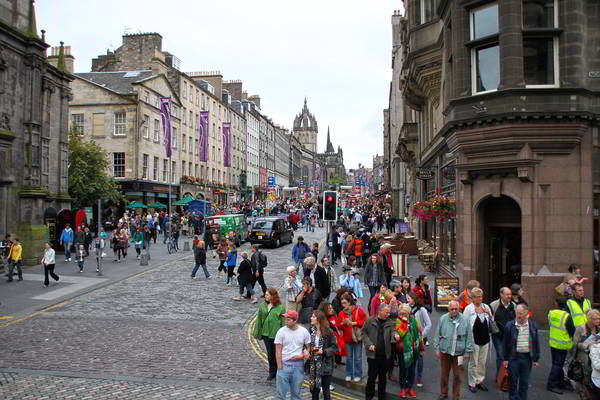
For an up to date seven day forecast for Edinburgh go here
Each August for three weeks the city of Edinburgh, Scotland’s capital, welcomes an explosion of creative vitality from all around the world
The Edinburgh Fringe Festival is among the biggest celebration of arts and culture on the planet.
The Edinburgh Fringe Festival (sometimes just called The Fringe) is the world’s largest arts event, which in 2019 spans 25 days and features more than 55,000 performances of 3,548 different exhibits in over 300 venues. Established in 1947 as a substitute for the Edinburgh International Festival, it takes place yearly in Edinburgh, Scotland, within the month of August.
It’s an open access (or “unjuried”) performing arts event, which means that anybody can take part. The official Fringe Programme categorises shows into sections for theatre, comedy, dance, physical theatre, circus, cabaret, children’s shows, musicals, opera, music, spoken word, exhibitions and events. Comedy is the biggest part, making up over one-third of the programme and the one which has the best public profile, due partly to the Edinburgh Comedy Awards.
Fringe venues are available all styles and sizes, with use being fabricated from practically any viable area that’s accessible, from common theatres (e.g. the Traverse or Bedlam Theatre), performance rooms (e.g. the Assembly Rooms), church buildings and church halls (e.g. the Quaker Meeting House, Paradise in Augustines), lecture theatres (together with the notable George Square Theatre), convention centres, different college rooms and areas, bars and pubs, non permanent buildings (The Famous Spiegeltent and the Udderbelly), colleges, a public rest room, the again of a taxi, a double-decker bus and even within the viewers‘s personal properties.
The teams that operate the venues are numerous: some are business and others not-for-profit; some function year-round, whereas others exist solely to run venues on the Fringe. Some are native, others are primarily based in London and elsewhere and switch to Edinburgh for August.
From the performers’ perspective, the choice on the place to carry out is often primarily based on a mix of price, location (proximity to the primary Fringe hubs is seen as a bonus), and the philosophy of the venue – a few of whom concentrate on beginner, faculty or school productions, a few of whom are semi or wholly skilled.
The primary venue operators can broadly be cut up into 4 teams:
The Big 4 – Assembly, Gilded Balloon, The Pleasance, Underbelly. These are the biggest venue operators by turnover and reputation, and in lots of instances probably the most long-standing. They have a tendency to concentrate on comedy, and in 2008, they briefly and controversially tried to re-brand themselves as Edinburgh Comedy Festival.
Different paid venues – Apart from the Big 4, there are a selection of mid-scale operators operating multi-room venues, and generally working throughout multiple locations. These embody theSpaceUK, C venues, Greenside Venues, Sweet Venues, Just the Tonic, ZOO venues and Paradise Inexperienced. They might concentrate on genres (comedy at Simply the Tonic, theatre at Greenside Venues) or run a programme throughout all genres.
Free venues – As an alternative of charging performers to rent the room, and audiences to attend, they make their areas accessible at no cost, with audiences making a donation if they’ve loved the show. These promoters are more likely to operate out of pubs and clubs – the rooms being made free as an approach to boost bar takings.
Pay What You Need – In 2013 comic Bob Slayer launched a brand new model to the Fringe, at his Heroes of Fringe venues, the place the audience might ‘Purchase a ticket upfront to ensure a seat or Pay What You Need (PWYW) on exit’. The model is a mix of Paid and Free and allows performers to find paying viewers with out risking giant advertising and marketing spend.